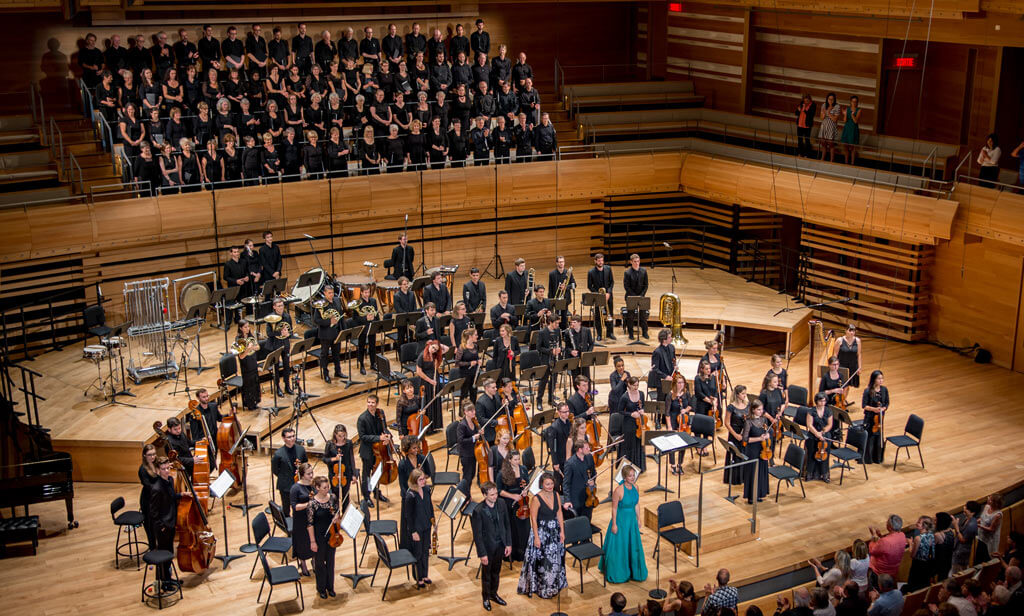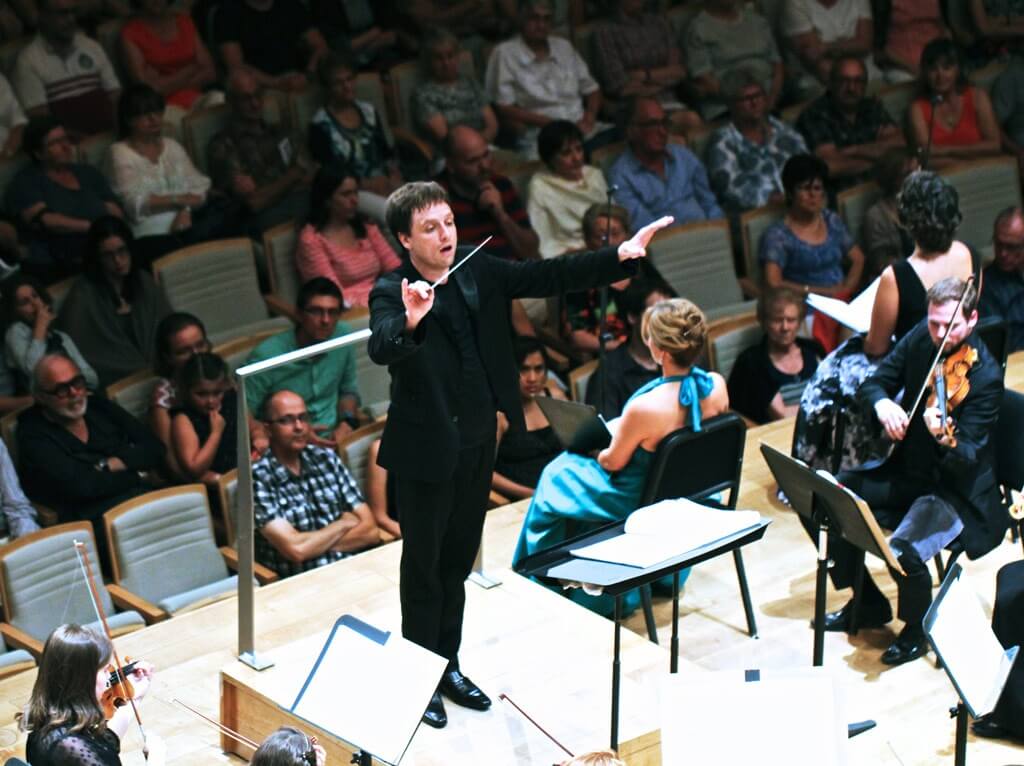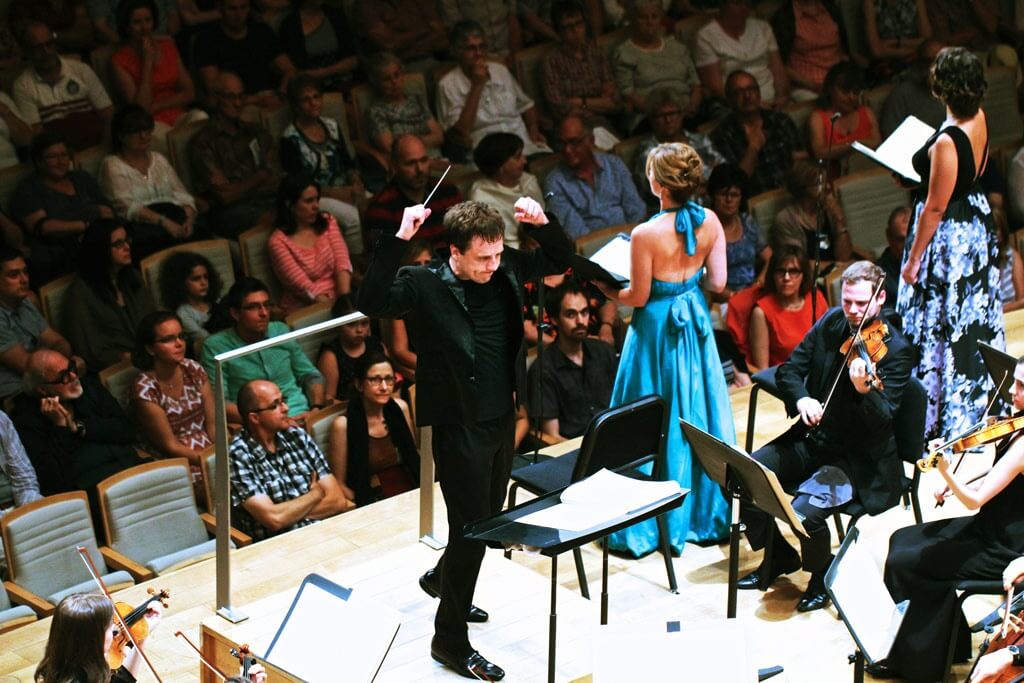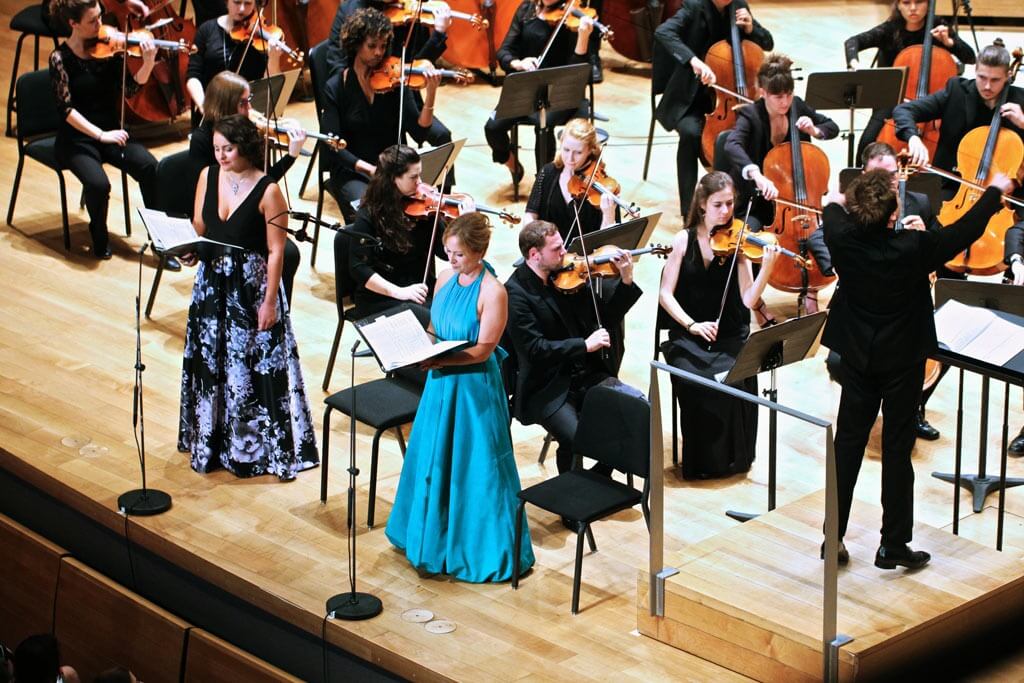
Orchestre de la Francophonie, Jean-Phliippe Tremblay (conductor) with Serhiy Salov (piano), France Bellemare (soprano), Julie Boulianne (mezzo-soprano) at Maison symphonique in Montreal. August 7.
Wait a minute. Fifty-six instrumentalists in Mahler’s Second Symphony? That number represents only a little more than half the total normally assigned to this five-movement blockbuster, which is subtitled “Resurrection” for a reason.
Yet such was the modest quorum assembled on Sunday in the Maison symphonique in Montreal, where Jean-Phliippe Tremblay and his Orchestre de la Francophonie gave what must have been the Canadian premiere of a reduction undertaken in 2013 by the late Mahler-loving publisher and amateur conductor Gilbert Kaplan and the successful pop arranger Rob Mathes.
The stirring performance made it clear that while less might not be more in this majestic score, it can be enough.
Strings, as might be expected, were classically proportioned. The opening flourishes for cellos and basses (grouped on the conductors left, according to contemporary fashion) were perhaps better described as affirmative than impressive, while the rising theme in E major was less of a foreground experience than usual. Even at pianissimo, more strings create an aura denied a midsize squad.
Everything is relative, and it was soon evident that Tremblay’s sure sense of pace, allied with the discipline and dedication of these young players, would make whatever amends were needed. Woodwinds were ripe, and percussion crackled. One good timpanist (a Frenchman) did the work of two, and pretty well. (The thought occurred to me: If Mahler supposed two timpani to be necessary for Beethoven’s Ninth, I wonder if Beethoven would “improve” Mahler’s orchestration accordingly?)
In some respects, the reduced dimensions determined valid interpretive options. Why not take the Ländler second movement with more elegance and less galumphing stress on rhythm? The triple time of the third movement was wonderfully fluid, surely in part because of the willowy sound.
Our soloist in Urlicht (words not supplied) was no less a mezzo-soprano than Julie Boulianne. She combined radiant sonority and forward-looking tempo to inspiring effect. Soprano France Bellemare soared sweetly in the finale.
This was the movement in which the reduction was most evident, as brass players frequently exited to play the music Mahler assigned to offstage forces. Three trumpets are not often expected to do the work of 10.
Still, if they are the right three, the job can be done. The principal, an American, was a standout. Lower brass chorales were as glowing and cohesive as can be imagined. And the fortissimo crash at the opening lacked nothing in impact.
The 90-odd voices of the Alliance des chorales du Québec entered softly and rose to a suitable climax. Perhaps an organ (which the Kaplan/Mathes reduction permits) would have created a grander peroration. But the drama of the finale was vivid. This was an expressive and exciting Second.
On the occasion of its 15th anniversary, the OF is an international ensemble, including players from Australia, Brazil, Israel, Italy and the United States as well as France (whence came fine principal horn, trombone and tuba) and Canada (the estimable principal flute and oboe). As Tremblay was willing to admit in an onstage interview, a little English creeps into the French rehearsal discourse now and then. Such also was the method of Charles Dutoit with the OSM. It was interesting that this most practical of francophone conductors sent a congratulatory message, which was read before the concert.
The hall was nearly full. Low ticket prices helped, but the turnout was still impressive on a sunny afternoon. Quite a symphonic city, Montreal.
Opening the concert was Mozart’s Piano Concerto No. 23 K. 488. Serhiy Salov was luminous in the Andante and chipper in the finale (where ornaments added charm, not ostentation). Tremblay used the same big circular gestures he would later apply to Mahler. No harm done.
#LUDWIGVAN
Want more updates on Toronto-centric classical music news and review before anyone else finds out? Get our exclusive newsletter here and follow us on Facebook for all the latest.






